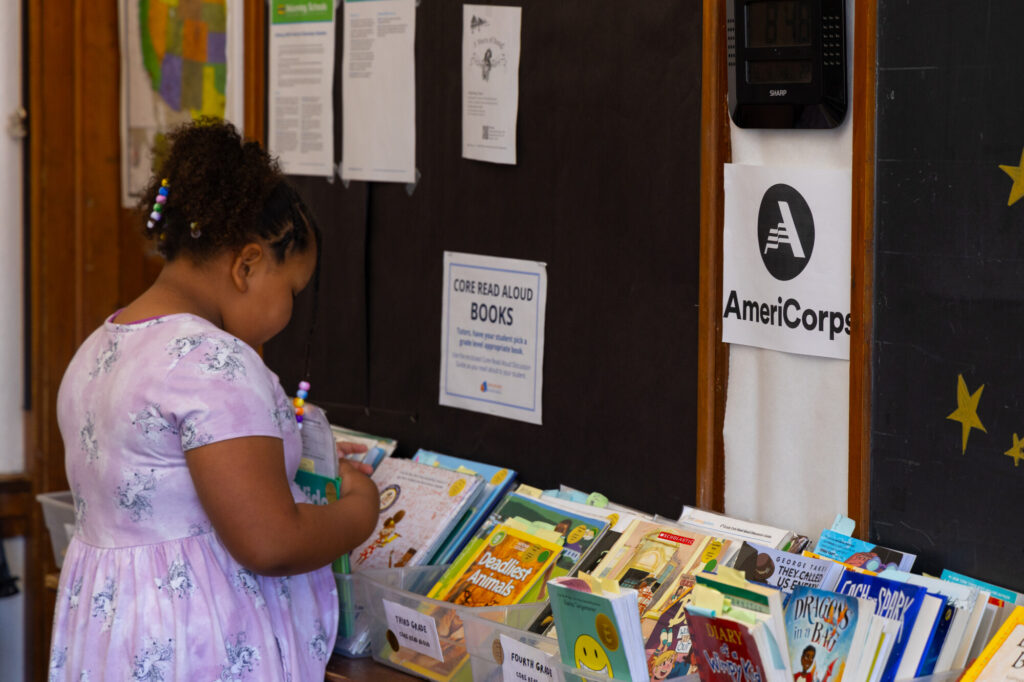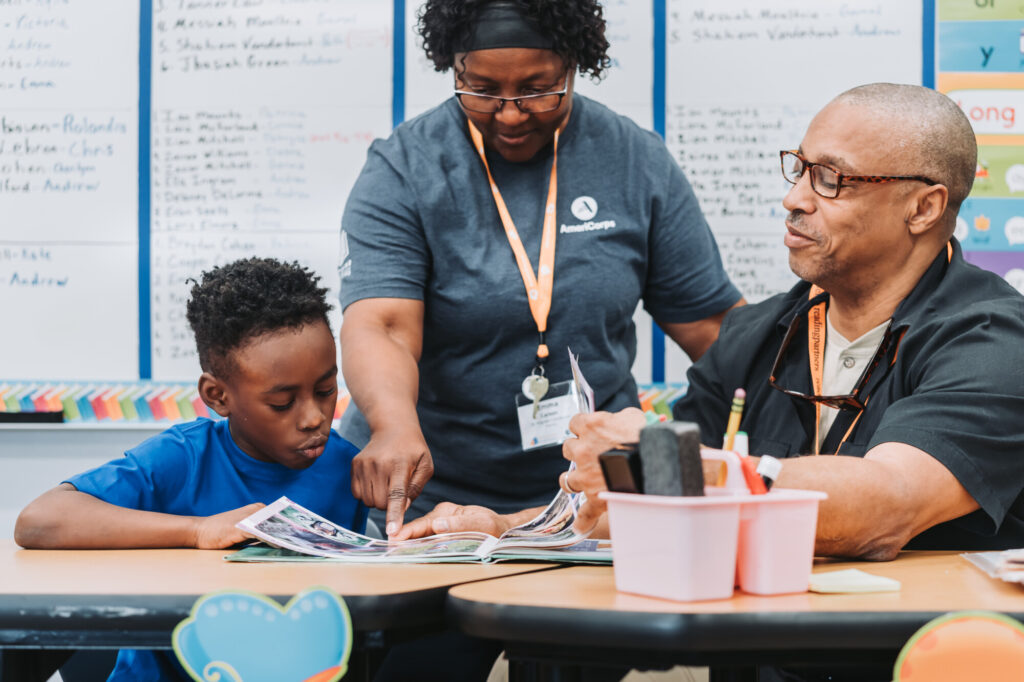
Teaching diversity to our youngest generation
November 18, 2016
Community Engagement Coordinator*VISTA
As a child, some of the most impactful books I read were those that explored themes of race, ethnicity, and cultural awareness. They taught me about people vastly different from myself and opened my eyes to the importance of celebrating diversity and practicing compassion and tolerance to all.
To impart these same ideologies of equity and inclusion on our youngest generation, we can start by creating a positive dialogue and educating our youth about diversity. During polarizing events or times of conflict, it’s even more important to meet kids’ concerns or questions with open conversations. However, starting such conversations can be difficult and awkward. We may hesitate for fear of saying the wrong thing or not knowing how to answer hard questions.
The truth is, kids will begin to form their own notions around race, tolerance, and identity, regardless of whether we choose to openly discuss such topics with them or not.
Studies show that children start to form racially biased behaviors as young as three years old based on observations of their surrounding environments. As children get older, it’s natural that they’ll start to ask questions about their own identity and that of others. Parents, educators, and community members can welcome such questions and provide age-appropriate ways to explore these issues.
In honor of Picture Book Month, here are five picture books and discussion questions that celebrate diversity and spark positive conversations about race with young children.
Amazing Grace by Mary Hoffman
Recommended for grades kindergarten through fourth.
Grace has an amazing imagination and loves telling stories. When she hears her school will be doing the play Peter Pan, she jumps at the chance to play the lead. Unfortunately, her aspirations are quickly dashed when her classmates point out that she can’t play Peter Pan—Grace is not a boy, and Peter Pan isn’t black. Grace’s family reminds her that she can be anything she wants to be. With their love and encouragement, she proves that her identity does not limit her ability to achieve her dreams and lands the role of Peter Pan.
- How do you think Grace felt when her classmates said she could not play the role of Peter Pan because of her gender and race?
- How would you have felt?
- What would you say to Grace if you could talk to her?
- Spend a few minutes brainstorming different kinds of careers and have your child draw pictures of people in various professions (e.g., firefighter, teacher, doctor, nurse, police officer). Discuss what responsibilities each profession entails. Emphasize that all jobs can be done by both men and women and that your race and gender do not define your capabilities.
Additional resources: Amazing Grace Discussion Guide
Last Stop on Market Street by Matt de la Pena
Recommended for grades pre-K through second.
CJ and his grandma ride the bus through the streets of San Francisco after church each week. CJ wonders why his family doesn’t have a car like some of the other kids at school or why they always get off the bus on the dirty side of town. Through his grandma’s bright perspective, CJ learns to begin to see the beauty in his urban surroundings and learns to appreciate the people around him. This book explores issues of race and class and reminds us there is beauty and value to be found in what we already have and in what we have to offer.
- Why is CJ upset at the beginning of the story? How and why does his mood start to change?
- CJ’s grandma teaches him to see the beauty in his everyday surroundings. What are some places and people that CJ starts to recognize as beautiful?
- What are some things that you think are beautiful?
- What are some places and people your child sees every week that they may not pay attention to? Spend some time listing some of the sights, smells, and people they come into contact with regularly. Pick a few of these to focus on and discuss the beauty that can be found in each.
Additional resources: Last Stop on Market Street Discussion Guide
A Piece of Home by Jeri Watts Ill
Recommended for grades pre-K through second.
Hee Jun and his family have just immigrated from South Korea and arrived in their new home in West Virginia. Hee Jun is having a difficult time adjusting to his new home. He grows frustrated by the language he cannot understand and his classmates and teacher who constantly stare at and speak loudly to him. The struggle to adjust can also be felt among Hee Jun’s family—his little sister starts to act out, and his normally wise and optimistic grandmother grows listless. With time, his family starts to adjust to their new life in America and find pieces of their Korean home in their new surroundings. This book follows the emotional journey and struggles that many immigrant families experience upon arriving in a new country.
- How does Hee Jun’s character change after he moves to West Virginia from South Korea?
- How does the family respond to the little sister acting out in school?
- Would you be want to be friends with Hee Jun? Why or why not?
- Imagine you are Hee Jun and have just moved to another country that is very different from where you have grown up so far. How would you feel? How would you want people to treat you?
Skin Again by bell hooks
Recommended for grades kindergarten through third.
Skin Again encourages readers to look beyond a person’s skin color to find out who they truly are. It reminds us that our skin is merely a covering that does not tell a person’s full story. This book taps into each child’s desire to be valued and loved for their heart and mind, rather than what lies on the exterior. It is what lies inside a person that reveals their full humanity.
- How would you describe your skin?
- What does skin color tell us about a person?
- What other qualities are important about a person?
- How do you share you who really are with others?
- How do you learn/find out what other people are really like?
Additional resources: Skin Again Discussion Questions
Pancho Rabbit and the Coyote: A Migrant’s Tale by Duncan Tonatiuh
Recommended for grades pre-K through third.
After a drought hits Papa Rabbit’s hometown in Mexico, he is forced to move north to the United States in pursuit of carrot and lettuce fields in order to feed his family back home. After years of being away, his family plans a homecoming party for him on the night of his expected arrival. However, when he fails to arrive home, Pancho Rabbit decides to make the arduous trek north to search for his father. Along the way, he meets a coyote who promises to guide him through a shortcut in exchange for food. Pancho Rabbit places his trust in this coyote, who ends up demanding more food at each step of their journey, until eventually, Pancho Rabbit runs out of resources. It is at this point that he is reunited with his father and the two begin their journey back home. Despite their joyful reunion, they still face uncertainty in what lies ahead of them. How will Pancho Rabbit and his family survive if their hometown continues to be faced with a drought? This story explores the struggles that many immigrant families face as they cross the border in search of a better life.
- How do you think Pancho Rabbit feels after his father does not come home for his homecoming party? What would you have done if you were him? Is it easy or safe to cross the desert to get north? What could happen to Pancho Rabbit and his family if Papa Rabbit did not cross the desert? Spend a few minutes discussing how the experiences of Pancho Rabbit and his family are similar to the experiences of real people. Explain what the words “migrant,” “immigrant” and “immigration” mean. After reading this story, what do you think about people who have immigrated to the United States for work?
Additional resources: Pancho Rabbit and the Coyote: A Migrant’s Tale Discussion Questions



